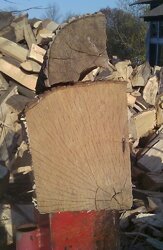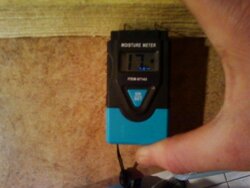I started splitting a lot bigger last fall when I got a couple years ahead. Pictured is my new target size with the old target on top. Any thoughts on how much longer it takes to dry bigger splits? Or are they pretty similar and smaller splits are just easier to burn because of the surface area? I am thinking I should stack the big ones separately until I know for sure? Because of space constraints, my stacks are nearly 10' high, so restacking is undesirable.
The bottom split is 7x9 1/2, top is 4 1/2 x 4 1/2.
The bottom split is 7x9 1/2, top is 4 1/2 x 4 1/2.



